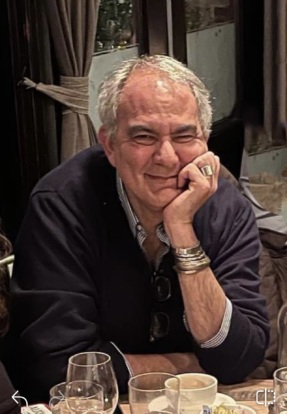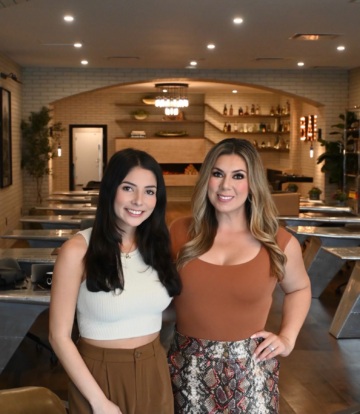Caregiving, Needs Navigation, Storytelling

Jen Barth writes about her own experiences juggling caregiving while also finding the time to take care of herself.
Jen Barth is an NPAF volunteer and a family caregiver from Portland, OR. Here, she recounts some lessons learned as a caregiver after her own recent healthcare experience. Check out her first blog post about travel tips as a family caregiver.
***
“Let’s verify the information we have for you. Has anything changed since the last time you were here?”
I’ve heard this question countless times over the years, but it caught me off guard as I checked in for a long-awaited surgery in September. Although I’d been to this hospital many times before, it was mostly in my role as a parent / family caregiver, visiting friend, or volunteer. I suddenly drew a blank at how long it had been since I last wore the “patient” hat.
When she reminded me the last time I was in the hospital was in 2015, it took a moment to sink in how much had changed in my own life and the world around me. Ten years ago, my twin daughters were 8; most of my post-op concerns were focused on who could help get them to and from school and activities. My mom, who has progressive Multiple Sclerosis (MS), was still driving, and happily stepped in.
I hadn’t yet heard the term “Sandwich Generation,” but I’d been part of this growing group since 2010, when she moved to live near us shortly after being diagnosed. And though there were healthcare uncertainties ahead, knowing ACA protections were in place brought considerable peace of mind.
Fast forward to 2025 — this year my daughters turned 18 and graduated from high school; my mom hasn’t driven in eight years due to MS symptoms, which continue to progress. The number of Americans serving as family caregivers has increased by 45 percent since then (roughly 1 in 4 adults); 29 percent of us fall into the Sandwich Generation category. And millions of Americans are facing significant healthcare cost increases and coverage losses due to expiring ACA provisions.
As I started thinking, there was more paperwork to complete. While the surgery itself was relatively minor — an outpatient procedure to address childhood hearing loss that had progressed — I thanked my lucky stars for my dear friend Allyson. She had cheerfully ignored me when I insisted that all I needed was a ride that day. She was right by my side to help me finish check-in, settle into my room, and take care of a few final details. This meant the world to me in those final pre-surgery moments and would become the first of a few important lessons I learned that day and in the coming weeks.
How I Got Here: The (long and winding) road to that day
While I’ve known I had hearing loss since childhood, I didn’t think much of it until my early 30s when a boss gave the heads-up we’d be switching to new insurance with more limited coverage. I scheduled a routine hearing test while it was still “free” and mostly remember how cutting-edge the testing booth was compared to when I was a kid. Results confirmed I was nearly deaf in one ear; the audiologist shared I may be a candidate for a then-experimental procedure. That seemed pretty over-the-top at the time, so I thanked them, tucked the results away and moved on.
Fifteen years later, I was back in an ENT office; this time for my daughter’s tonsillectomy consultation, reminding me I was overdue for another hearing test. Results noted additional loss; they suggested I come back next year for a follow-up. By then it was 2020, so hearing health was the farthest thing from my mind. Yet as masked life became our new reality, I found I was struggling to understand what people were saying. When doctors’ offices opened back up in 2021, I learned how many others were discovering they may have been relying on lip reading without knowing it until now.
In 2022 I turned 50; a few months later, the FDA improved access to more affordable hearing aids. I briefly considered them until a follow-up test confirmed my specific type of loss required a different type of device, which insurance didn’t cover. While the concept of elective surgery still felt daunting, I started learning about some of the hidden risks of untreated hearing loss, including links between hearing loss and dementia and continued to struggle.
So as we approached meeting our deductible in 2024, I was officially ready to consider surgery. By then, the schedule was full for the year, so I committed to getting it done in 2025, no more excuses! After setting a date, I rescheduled a few times given recovery period guidelines, which required 3 weeks of downtime — no easy feat to find given life’s realities. So when I finally arrived at the checked in desk this September, it felt like the end of a very long finish line. It was also the beginning of a wake-up call for a few more lessons learned…
Lesson 1. Just Because We Can, Doesn’t Mean We Should
Since I’d managed every step independently until then, it truly hadn’t occurred to me to do a “reality check” on my own care plan — something I’d done for others many times before. But being a patient, even if “just for a day” requires a much different mindset than caring for one. Luckily, Allyson brought enough wisdom for both of us that day and took over some final details I’d planned to cover myself. She also kept others posted afterwards — something I was surprised to discover I was in no shape to do; yet another reality check for me.
I’m happy to report the procedure went well, and my 3-week recovery window is now in the rear-view mirror — phew! Serendipitously, the post-op appointment was on my mom’s birthday; she asked to come, bringing us full circle to the many appointments she took me to when I was young. It also gave us a chance to reflect on the many appointments I’ve accompanied her to since then, and the very first pediatrician appointments she came to with our newborns back in the day.
Lesson 2. Put Yourself on the Schedule
As I recovered, I got to thinking why I’d waited so long to finally do this. After reading up on caregivers and health, it turns out I’m not alone. I recently learned about some eye-opening stats from Caregiver Action Network: 41% of family caregivers report low overall well-being (32% more than non-caregivers), and are an at increased risk for multiple chronic diseases, as they put their own needs on the back burner. AARP’s Caregiving in the US 2025 report also found that 45 percent of caregivers experience moderate or high physical strain, and nearly two-thirds report moderate or high emotional stress; only 23% report having “good” mental health. Sandwich Generation caregivers are also more likely to report substantial emotional difficulty than their peers who only act as caregiver to a parent over 65 (44% vs. 32%). These realities were powerful reminders of several routine appointments I had yet to schedule this year. So I committed to prioritizing other areas of my own health by scheduling them and encouraging others to as well every chance I get.
Lesson 3. We All Need Community — Now, More Than Ever
I’ve been fortunate to be part of the NPAF community since early 2024 and got another glimpse of just how much it means to me when I was two days post-op. When a monthly call for an NPAF Volunteer Working Group team I serve on popped up in my calendar, I wasn’t sure if I’d be up to attending, but after reading earlier that day that Sandwich Generation members and their parents are more likely than other caregivers to have Medicaid coverage I was reminded why this work is so critical: one of the agenda topics was the upcoming #GetCovered campaign. I jumped on late, intending to stay off camera with no mention of my condition so as not to detract from our focus that day. But listening to the discussion also reminded me what it means to be part of a group who encourages showing up as our full selves, walking the talk of NPAF’s core values of Authenticity, Connection, and Action. So when the time was right, I came off camera and filled them in on the new hat (or in my case, a post-op head bandage) I was now wearing. A few others shared their own stories, and I knew being that was just what the doctor ordered that day.
Lesson 4. Keep Engaging and Learning
Another perk of finally having this procedure behind me: being cleared to travel in plenty of time to attend my second Patient Insight Congress! As I write this, this annual conference dedicated to advancing healthcare initiatives informed by the whole patient experience is now underway; being together during National Family Caregiver’s Month has made the experience an even more meaningful one. If you’re looking for ways to engage with NPAF, the new #GetCareGetCovered campaign is a great place to start; you can also see more ways to get involved here.
Below are some helpful resources for fellow caregivers and caregiver-supporters to learn from this month, and throughout the year:
Caregiving, Needs Navigation, Storytelling
Caregiving, Health Literacy, Needs Navigation, Trust
Caregiving, Storytelling, Trust
Caregiving



